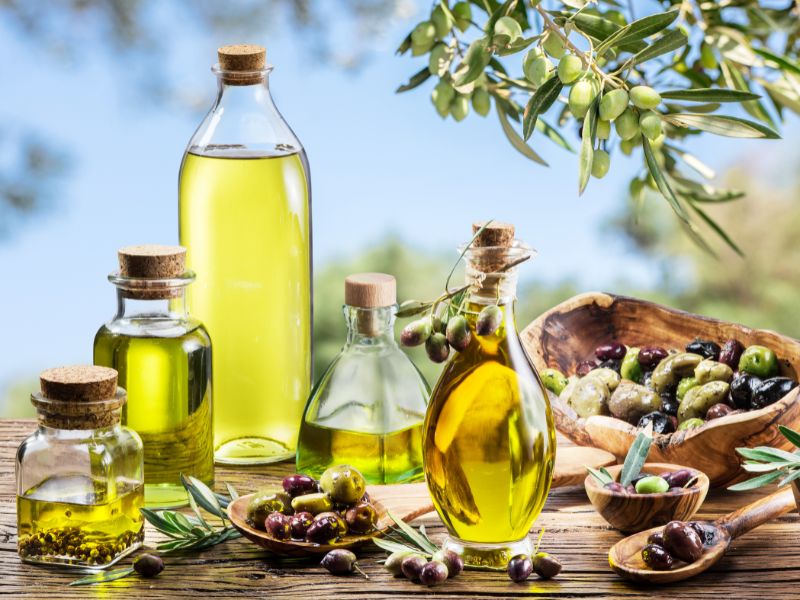Yes, you can substitute olive oil for vegetable oil in baking. However, olive oil has a distinct flavor and other properties to consider when replacing vegetable oil. While it offers a unique flavor profile and can affect the texture and density of the final product, With the right tips and tricks, you can make delicious baked goods that take advantage of olive oil’s many health benefits.
Some of the links below are affiliate links, meaning at NO additional cost to you, I may earn a small commission if you click through and make a purchase. Full disclosure
The Role of Oil in Baking
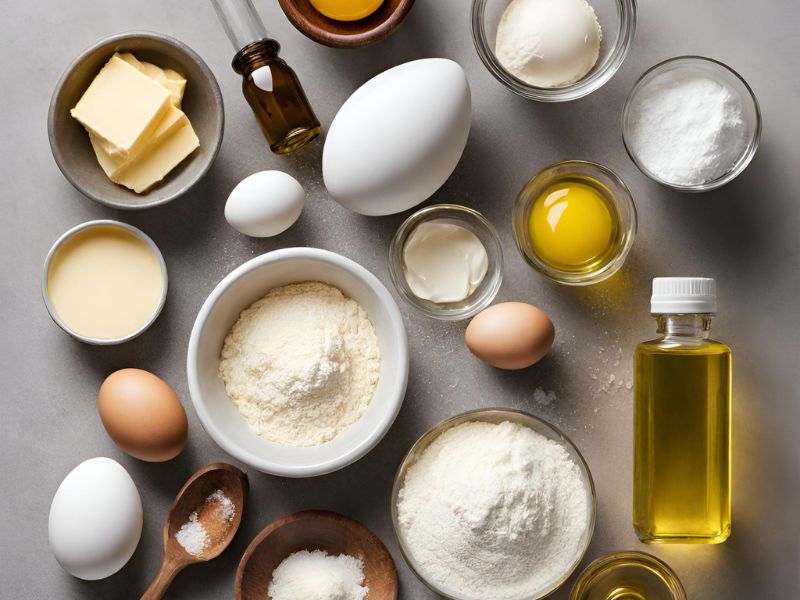
Before considering swapping olive oil for vegetable oil, it’s good to understand why recipes call for oil in baked goods like cookies, cakes, and muffins in the first place. Adding fat enhances moisture, tenderness, and richness. During mixing, solid fats like butter or shortening coat flour proteins to inhibit gluten development which makes cakes and cookies crumble nicely. Meanwhile, liquid fats help make muffins and breads soft and moist. Most recipes rely on the neutral flavor of vegetable oil to allow the other ingredients’ flavors to shine. Want to know more about fat necessity in baking? Read The Baking Rule You Can’t Ignore, Why Fats and Oils Matter More Than You Think
Most Common Vegetable Oils Used in Baking
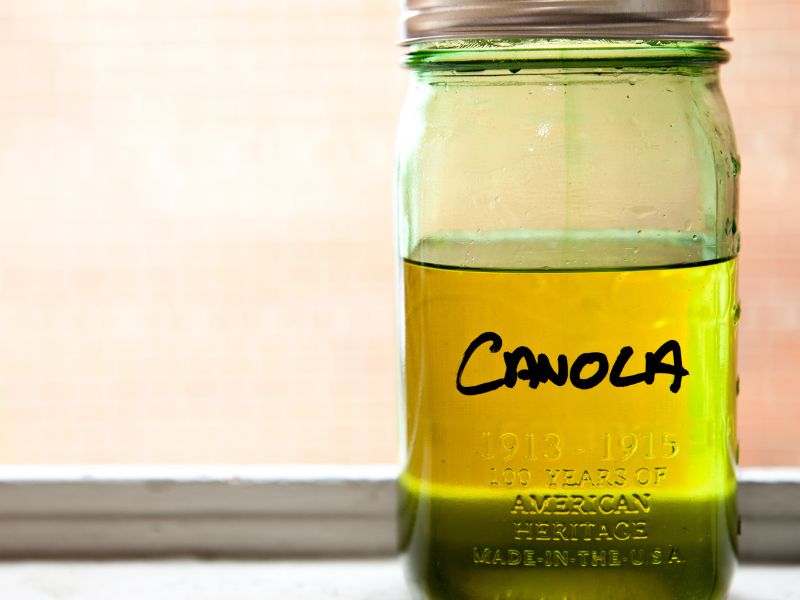
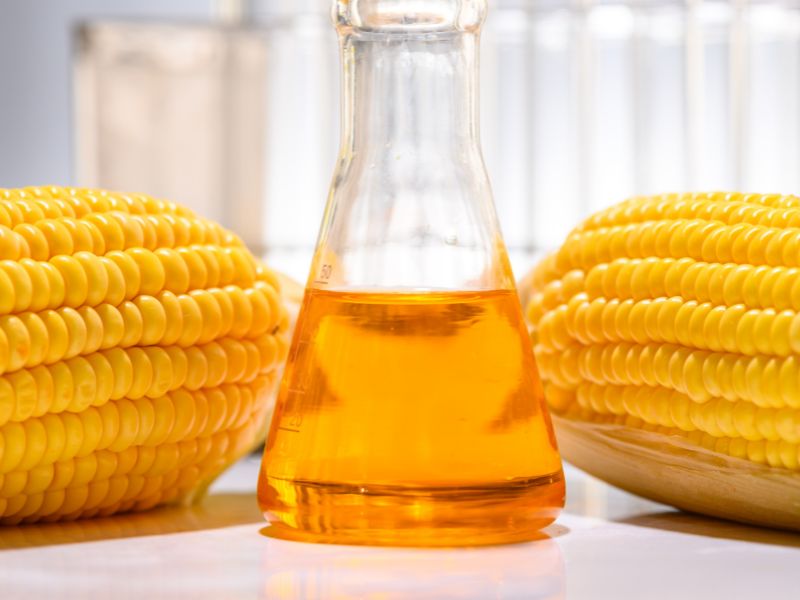
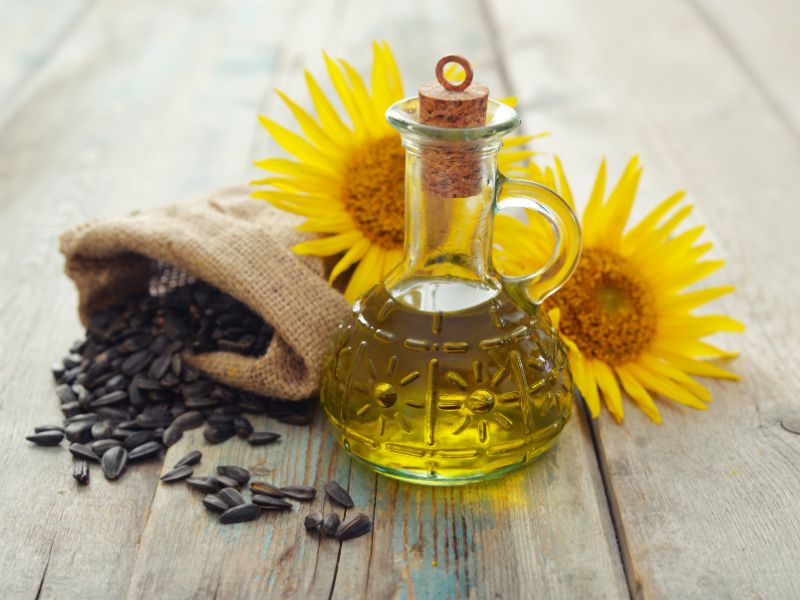
Vegetable oil typically refers to soybean, canola, corn, sunflower, safflower, peanut, or a blend of these oils which have high smoke points. Bakers often use:
- Canola oil to make tender cakes, muffins, and pancakes
- Corn oil for cornbread and biscuits
- Sunflower or safflower oil for cookies and pie crusts
These versatile, neutral vegetable oils liquefy at room temperature, perfect for creaming butter and sugar for fluffy cakes or muffins. But could an oil as distinctive as olive oil stand in for vegetable oil in your favorite recipes?
Olive Oil Flavor Considerations
The flavor intensity of olive oil varies greatly by type. Extra virgin olive oil (EVOO) offers the boldest, most complex olive notes, which can provide an intriguing, savory, fruity contrast in sweet baked goods. But its strong flavor may overpower more delicate recipes. Less expensive regular olive oil has a milder flavor resembling vegetable oil, while refined olive oil is lightest in flavor but loses healthful nutrients in processing.
An olive oil’s buttery, peppery taste comes from oleic acid and antioxidants – both nutrition powerhouses. But the same plant compounds that give EVOO its health benefits also make its chemistry react differently in baking applications than the neutral vegetable oil often called for in recipes.
Olive Oil’s Properties and Behaviors
| 🌿 Comparison Chart of Olive Oil Grades 🌿 | ||
|---|---|---|
| Grade of Olive Oil | Characteristics | Best Use in Baking |
| Extra Virgin Olive Oil | Highest quality, made from pure, cold-pressed olives; distinctive taste | Ideal for flavor-rich baked goods, artisan breads |
| Virgin Olive Oil | Slightly lower quality than extra virgin; good flavor and aroma | Good for everyday baking needs |
| Pure Olive Oil | A mix of refined and virgin oils; milder flavor | Versatile for various baked goods |
| Light Olive Oil | Refined olive oil with a neutral taste; light in color, not calories | Best for baking where a subtle flavor is desired |
| Brought to You by “wearebaking.com” | ||
Vegetable oils and olive oils have different fat molecule structures and melting points – which greatly influence texture and mouthfeel in finished baked goods.
The major fat in olive oil is monounsaturated oleic acid, which stays liquid at cooler temperatures than the polyunsaturated fats common in vegetable oils. So olive oil thickens faster when chilled – similar to coconut oil. Its cloud point where fats solidify averages around 40°F compared to vegetable oil’s cloud point of 32-35°F.
Since fat plays many different structural roles in cookies, cakes, and breads, substituting oils influences the finished texture. Olive oil’s lower melting point makes it easier to blend into batters at room temperature than semisolid vegetable shortening. But olive oil won’t cream and aerate as light and fluffy as vegetable oils when beaten with sugar into foamy cake batters.
Olive oil is also more dense than vegetable oil, which can make baked goods heavier or oily.
How Olive Oil Affects Texture and Moisture in Baked Goods
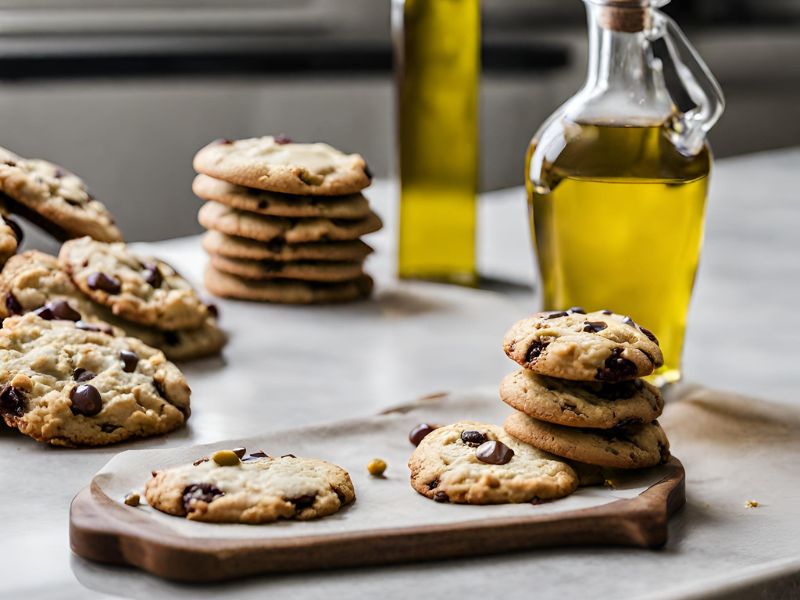
Because of olive oil’s distinct fat content, flavor profile, and behaviors compared to neutral vegetable oils, baking with olive oil significantly alters the end product with regard to texture, moisture, and overall taste.
Cookies and Bars: Replacing a portion of butter with olive oil in cookie and bar recipes results in a chewier texture. For example, substituting 1/3 of the butter in a chocolate chip cookie recipe with olive oil can prevent excessive spreading and crispness because olive oil has fewer milk solids than butter, which aids in cookie spread.
Cakes and muffins: Replacing some or all of the vegetable oil with olive oil makes quick bread like banana muffins and zucchini bread super moist but denser.
Yeast breads and pizza dough : The most successful use of olive oil is in lean yeasted breads, which benefit from olive oil’s moisture and tenderness since these doughs include minimal fat compared to cakes.
Pie crusts – Olive oil makes pie dough more pliable and easier to roll out without additional chilling time. A mix of butter and olive oil helps flaky layers form. But all olive oil crusts bake up crumbly rather than flaky. So, it’s ideal to use just enough to make the crust more workable.
The fresher and better quality the olive oil, the less off flavors like rancidity will come through in baking. The next time a recipe calls for oil, consider substituting light olive oil for up to half the neutral oil to take advantage of its healthy fats. Then, taste test your way to the ideal ratio for your preferences.
Swapping Olive Oil For Vegetable Oil
| 🍪 Guidelines for Swapping Vegetable Oil with Olive Oil 🍪 | ||
|---|---|---|
| Baked Good | Substitution Ratio | Notes |
| Muffins | 1/2 cup to 1/4 cup Olive Oil + 1/4 cup Vegetable Oil | Moist and tender results |
| Cakes | 1 cup to 3/4 cup Olive Oil + 1/4 cup Vegetable Oil | Nicely tender crumb |
| Pizza Dough | 2 tbsp Vegetable Oil to 2 tbsp Olive Oil | Great flavor results |
| Pie Crusts | 1/4 cup to 3 tbsp Vegetable Oil + 1 tbsp Olive Oil | Maximize flakiness |
| Quick Breads | 100% Olive Oil | Moisture and richness in denser breads |
| Pound Cake | 100% Olive Oil | Preserves tender crumb, good for rich flavors |
| Oil-based Cakes | 100% Olive Oil | No compromise in texture |
| Brought to You by “wearebaking.com” | ||
When replacing vegetable oil with olive oil in baked goods, the ideal ratios can vary depending on the recipe. Here are some general examples:
Muffins – For a muffin recipe calling for 1/2 cup vegetable oil, you could use 1/4 cup olive oil + 1/4 cup vegetable oil for moist and tender results.
Cakes – If an oil-based cake recipe calls for 1 cup of vegetable oil, try 3/4 cup olive oil + 1/4 cup vegetable oil instead for a nicely tender crumb.
Pizza dough recipe specifying two tablespoons of vegetable oil, you could successfully use two tablespoons of olive oil with great flavor results.
Pie Crusts – For a pie crust recipe requiring 1/4 cup oil, try using three tablespoons vegetable oil + 1 tablespoon olive oil to maximize flakiness.
Getting the olive oil-to-vegetable oil ratio right for the particular baked good is key for achieving ideal moisture, rise, and texture. Taste test batches with different percentages to land on your perfect ratio match.
Here are some examples of baked goods where you can successfully use a 1:1 substitution (replacing 100% of vegetable oil called for with olive oil):
Quick Breads – Denser quick breads like banana bread, pumpkin bread, zucchini bread can handle a 100% olive oil swap nicely. The olive oil lends moisture and richness.
Pound Cake – Since pound cakes utilize a lot of oil/fat, you can substitute olive oil 1:1 without impacting the tender crumb too much. Olive oil also pairs well with pound cake flavors.
Oil-based Cakes – Cakes with a high ratio of oil to other liquids like a classic one-bowl chocolate cake allow full olive oil substitution without compromising texture.
The more delicate the crumb or, the more the recipe relies on creaming butter & sugar for lift, the less olive oil you’ll want to use. But for simple oil-based baked goods, olive oil shines with a 1:1 ratio.
As an Amazon Affiliate, I may earn a commission from qualifying purchases.
Getting Creative with Olive Oil
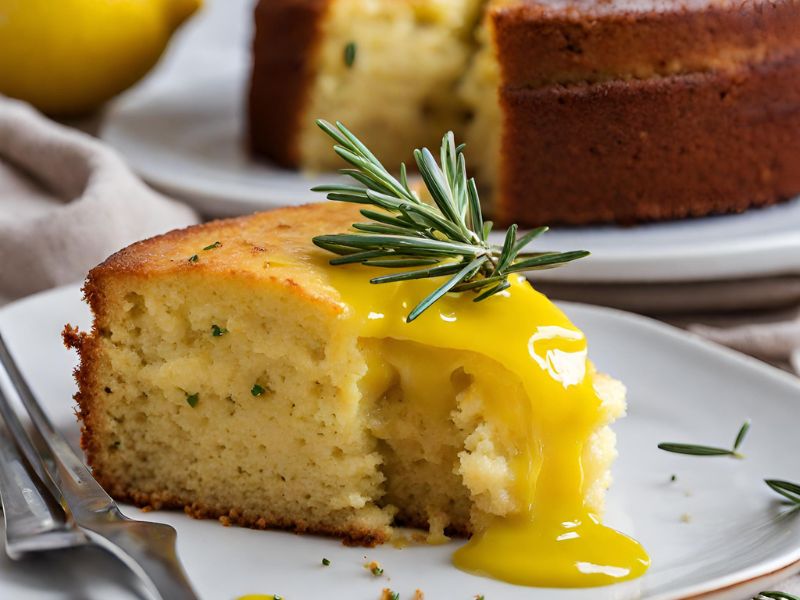
Once you get comfortable with using olive oil instead of vegetable oil, why not get creative with olive oil’s savory, bright flavor in baking? Here are some recipe ideas that highlight olive oil:
Pesto swirl bread – Add a flavorful basil pesto swirl throughout your favorite artisan bread recipe. The olive oil in pesto shines when contrasted with nutty whole grains.
Lemon olive oil cookies – Bright citrus notes pair deliciously with grassy, peppery olive oil. Add lemon zest and a drizzle of melted white chocolate.
Olive oil rosemary cake – For this Mediterranean spin on a vanilla cake, swap almond milk & olive oil for dairy milk and butter. Toss chopped rosemary into the batter and decorate with lemon curd or honey buttercream.
Blood orange olive oil muffins – Swirl sweet blood orange olive oil into a basic muffin batter studded with dark chocolate chunks. Top with a crunchy turbinado sugar sparkle.
The benefits of cooking and baking with olive oil are clear. So, don’t be afraid to use olive oil instead of vegetable oil in your next baking adventure. Adjusting ratios, moisture, sweetener, and flavor combinations can let the quality and nutrition of olive oil shine in both classic recipes and new baked goods.
Key Points
- Olive Oil as a Substitute: Olive oil can be used in place of vegetable oil in many baking recipes, offering a distinct flavor and health benefits.
- Oil’s Role in Baking: Fats, including oils, contribute to the moisture, tenderness, and richness of baked goods, affecting texture and flavor.
- Vegetable Oil in Baking: Common vegetable oils like soybean, canola, and corn oil are favored for their neutral flavor and high smoke points, making them versatile for various baked goods.
- Olive Oil Flavor Profile: Olive oil, especially extra virgin, has a bold flavor that can influence the taste of baked items. Lighter olive oils may be more suitable for delicate flavors.
- Chemical Differences: Olive oil has a different fat molecule structure and melting point compared to vegetable oils, which can alter the texture and density of baked goods.
- Texture and Moisture Impact: Using olive oil can change the texture and moisture content of baked items, such as making cookies chewier or quick breads denser.
- Substitution Guidelines: The article provides specific ratios for substituting olive oil for vegetable oil in various baked goods, suggesting adjustments for ideal results.
- Creative Baking with Olive Oil: Encourages experimenting with olive oil in baking to enhance flavors, suggesting recipes like pesto swirl bread and lemon olive oil cookies.
Have you used olive oil in your baking? If not, give these Olive oil lemon cookies a try. and leave me a comment below
And As Always
Keep On Baking!
Taianne
Share the Love

I’m Taianne, the owner and operator behind We Are Baking. Baking my first cake at age 11 hooked me on creating sweet treats. Though my interest faded during childhood, it was rekindled when I married my apple pie-loving husband. I love trying new recipes, tweaking classics, and helping others learn the science and art of baking. I started We Are Baking to share tips, tricks, and favorite recipes I’ve discovered over the years. When not in the kitchen, I enjoy spending time with family and friends. My goal is to inspire others to embrace their creativity through baking. Feel free to contact me with any questions!
Taianne@wearebaking.com

